#Chicomecoatl
Explore tagged Tumblr posts
Text

Xilonen aka Chicomecoatl, a goddess from a different lostbelt. Travel to different worlds to protect humanity. "You're the Master of Chaldea, nice to meet you. I'm Xilonen goddess of Harvest, Humanity and central."
#xilonen#chicomecoatl#fanart#fanservant#fate#fate fanservant#fate grand order#fgo oc#my art#trashy oc#oc#nasuverse#digital art#type moon#fate series#my ocs#aztec#mexico
12 notes
·
View notes
Text

Chicomecoatl
Also referred to as the "Goddess of the Temple Headdress", she is associated with maize which she sometimes holds, and is an important female cult figure to the non-elite
kneeling with hands on her lap, her face enveloped in the large rectangular headdress, amacalli, featuring a flower rosette at each corner, stiff segmented paper plumes secured with a twisted cord around the head, and long paper segments trailing down onto her shoulders, wearing the fringed quechquemitl cape, skirt and ear ornaments; with remains of deep red pigment overall.
4 notes
·
View notes
Text

#Xilonen #Chicomecoatl Corn was associated with three different detties-
4 notes
·
View notes
Photo
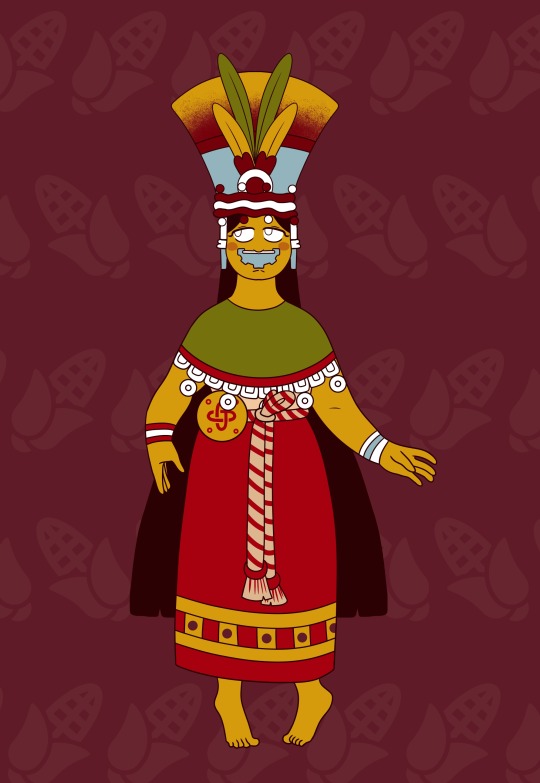
Xilonen / Chicomecoatl
Una de las 4 esposas de Tezcatlipoca
11 notes
·
View notes
Text

Chicomecoatl
stone, height: 13 1/2 inches, kneeling with hands on her lap, her face enveloped in the large rectangular headdress, amacalli, featuring a flower rosette at each corner, stiff segmented paper plumes secured with a twisted cord around the head, and long paper segments trailing down onto her shoulders, wearing the fringed quechquemitl cape, skirt and ear ornaments; with remains of deep red pigment overall. Pierre Matisse Gallery, New York , (probably stock book no. "1086", "Goddess/Headdress with discs", acquired May 21, 1941) Overall good, has old losses to some areas, small chip on front of her skirt, slight loss to flower rosette on top front left side and loss on rosette rear right. In response to your inquiry, we are pleased to provide you with a general report of the condition of the property described above. Since we are not professional conservators or restorers, we urge you to consult with a restorer or conservator of your choice who will be better able to provide a detailed, professional report. Prospective buyers should inspect each lot to satisfy themselves as to condition and must understand that any statement made by Sotheby's is merely a subjective qualified opinion. NOTWITHSTANDING THIS REPORT OR ANY DISCUSSIONS CONCERNING CONDITION OF A LOT, ALL LOTS ARE OFFERED AND SOLD "AS IS" IN ACCORDANCE WITH THE CONDITIONS OF SALE PRINTED IN THE CATALOGUE. Also referred to as the "Goddess of the Temple Headdress", she is associated with maize which she sometimes holds, and is an important female cult figure to the non-elite; see Pasztory (1983:218, pls. 180-182).
0 notes
Text

been doodling while at school. ft some of the aztec pantheon
#ipfy dot tif#doodles and sketches#chalchiuhtlicue#citlalicue#pezito#<organizational tag for . my weird fish girlthing#there is also a single tlaloc#and also chicomecoatl#and a poorly drawn quetzalcoatl.#ALSO. sorry that its blurry im bad at taking Pictures
5 notes
·
View notes
Note
Tezcatlipoca, Coyolxauhqui, Xipe Totec, and Mixcoatl: Why tell someone to kill themselves when you can do it for them
out of the aztec gods who would say kys and like actually mean it and who would not be serious

with the Aztecs, i feel like most of them can be scary and serious so many of them are serious lol... with Coyolxauhqui and her dad Mixcoatl,, i've always imagined them to be more serious and stern so i think they wouldn't bother saying "kys"-- they'd just get down to it.
#If it’s Aztec gods yk imma reblog it#Aztec mythology#aztec gods#coyolxauhqui#mixcoatl#huitzilopochtli#Tezcatlipoca#itzpapalotl#coatlicie#nanahuatzin#xolotl#chicomecoatl#Tlaloc
32 notes
·
View notes
Text

Xilonen (Chicomecoatl) is known as a corn goddess, seven serpent goddess from Aztec and also is a dragon god from an old civilization called Olmec. In her world, who sees the beginning of the people in Olmec civilization and last she was reborn as a goddess from Aztec.
"...yes? Oh, I may not be Xilonen and Chicomecoatl from Proper Human History. I'm one individual as Xilonen and Chicomecoatl. As I protect the people and teaching people about agricultural.
#fanart#fanservant#fate#fate fanservant#fate grand order#my ocs#fgo oc#fgo#my art#trashy oc#aztec#meixco#xilonen#chicomecoatl#oc
10 notes
·
View notes
Text

Xilonen, Goddess of Young Maize (Chicomecoatl) unknown artist Museum of Archaeology and Anthropology, University of Cambridge
54 notes
·
View notes
Text

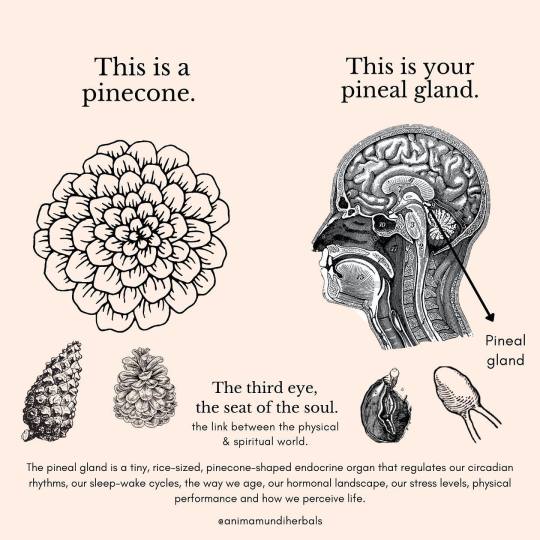
The Pineal Gland is a tiny pea sized gland located in the center of our brain, and happens to be one of the master endocrine glands that controls many aspects of our everyday life. Although it's not fully understood, one of it's main functions is to secrete melatonin, one of the most powder antioxidants best known for regulating sleep, circadian rhythm, aging, etc.
There’s hundreds of accounts written by ancient cultures all over the world on the esoteric and anatomical mysteries on this precious gland. And, although modern scientists have observed how the pineal gland secretes essentials like melatonin, serotonin and DMT (the spirit molecule) many of its roles remain a mystery.
17th century philosopher + scientist René Descartes, dedicated much time to the study of the pineal gland. He represented it as a Pinecone, a sacred symbol throughout history in almost every culture around the world and coined it as "principal seat of the soul". He said it was the link between the physical and spiritual world.
Ancient Assyrian carvings, dating back to 713-716 BC depict four-winged God-like figures using a pinecone to polinate their depiction of the Tree of Life.
In Greek and Roman history. Dionysus, was continually depicted carrying a "Thyrsus," a fennel staff woven with ivy and leaves and topped with a pinecone.
In Catholic traditions, The Egyptian Staff of Osiris, dating back to 1224 BC, depicts two intertwining serpents The Coat of Arms of the Holy See, found on the Vatican flag among other places, features a stacking of three crowns in shape to a pinecone.
Tribute to the Pinecone's immortality symbolism. Rising up to meet at a pinecone. Buddhists all throughout history have shaped their hair into the pinecone shape to pay honor to the pineal gland's powers. Mexican god "Chicomecoatl" ("Seven Snakes") depicts the deity offering forth pinecones in one hand, and an evergreen tree in the other. Indian deity "Kundalini" depicted as coiled serpents rising up from the base of the spine to the Third Eye (Pineal Gland) in the moment of enlightenment.
156 notes
·
View notes
Text

Chicomecoatl
Chicomecoatl, or Seven Serpent, the Aztec goddess of corn and sustenance was associated with both fertility and agricultural abundance. During the annual Huey Tozozotli festival that honored the corn plant, corn cobs and maize stalks would be bundled and carried by young women to be left at the Temple of Chicomecoatl.
2 notes
·
View notes
Text
El Dorado x Maya and the Three gods
Here are the gods that will be featured the most prominently in the El Dorado story
Quetzalcoatl: god of wisdom (Tezcatlipoca’s brother)
Chantico: goddess of personal treasures
Tlaloc: god of water
Chicomecoatl: goddess of agriculture
Itzamna: god of the sky
Ek Chuah: god of cacao/chocolate
Huitzilopochtli: god of sacrifice
The most important ones on this list is Quetzalcoatl and Huitzilopochtli. This story won't be out for a long time, but I figured I'd share this with you.
12 notes
·
View notes
Text
Cultural references of Citlali
Citlali is my favorite character in Natlan and I haven’t seen people talking about her amazing but subtle elements in her design, she seems to have mostly Aztec and Mexica references which makes sense since these two communities were intertwined with each other at some point in history, I just wanna ramble about the elements I noticed! ;
DISCLAMER
If you think I got smth wrong tell me, even though I’m Mexican I cannot memorize every single detail about the cultural groups I’m talking about (Mexica/Aztec) , I had to do some research for this :P, if you also think there’s more elements I would absolutely love to start a conversation!!!! I love discussing the cultural aspects of Natlan as a whole!!! Also I know Natlan is based on the “ring of fire”, hence, I will not speak about cultures that I’m not a part of until I have done the proper research!

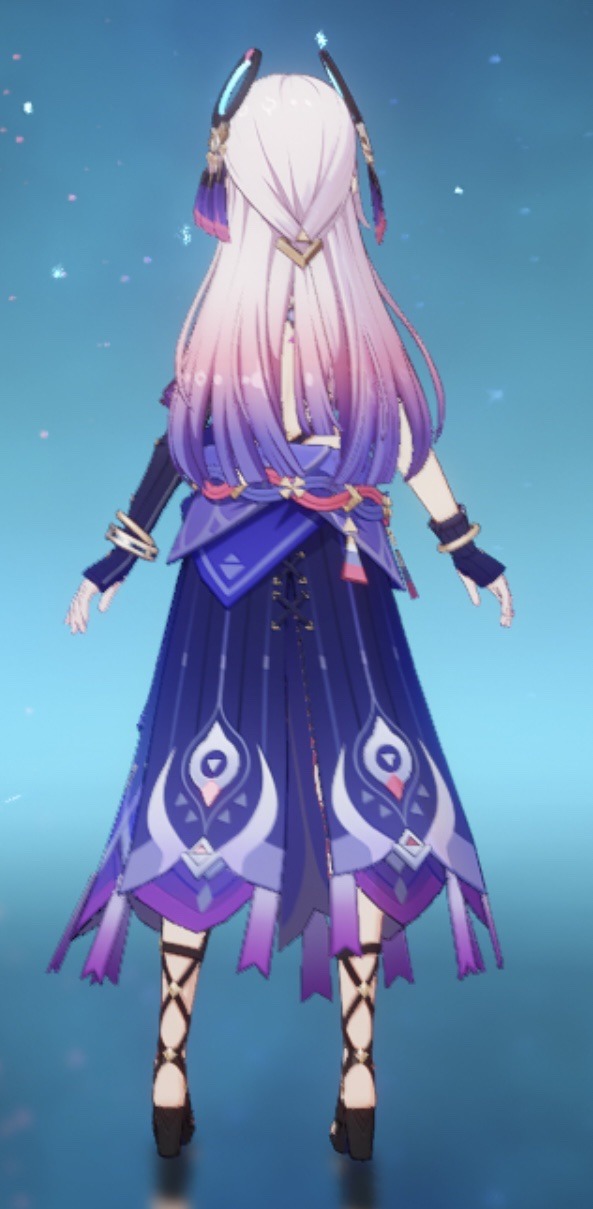
Name Origin!
Citlali’s name means star, but it’s also a derivative from the goddess Citlallicue, which can mean “skirt of stars”. In Mexica mythology she’s the creator of stars, and goddess of the milkyway, there’s also some writings which have Citlaltonac as her husband, but others say it’s just another variation of her name

Possible color inspiration
Citlali’s pink color palette is not a coincidence, she seems to be based on an axolotl, specifically the Ambyosta Rosacium, whose colors are a result of albinism
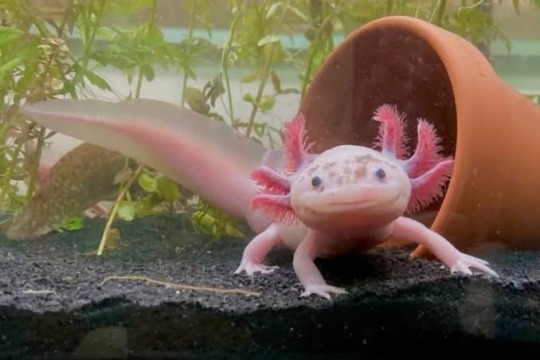
these animals have the ability of regeneration and keep several of their larva characteristics in their adulthood, the axolotl was thought to have eternal life because of their regeneration capabilities, or “eternal youth” in a sense
the Mexicas tought that this animal was the god Xolotl, the aztec god of the sun, and also called the “afternoon star”

Cultural references
Ilamatecutli could also be another variant of Citlallicue, in Mexica mythology she is the goddess of wisdom and old age, she was also the “feminine representation of old age” in some writings, other variants are “the old lady” and “custodian of traditions, fertility, earth and the knowledge passed down through generations”.
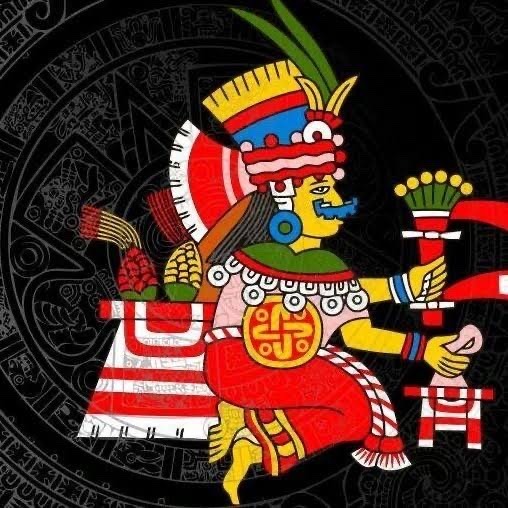
Ilamatecutli was also thought to be another variant of Chicomecoatl, goddess of corn, or the “old corn”, while this may be reaching I wonder if that also influenced her black/purple color palettes since there is the purple/black corn variant
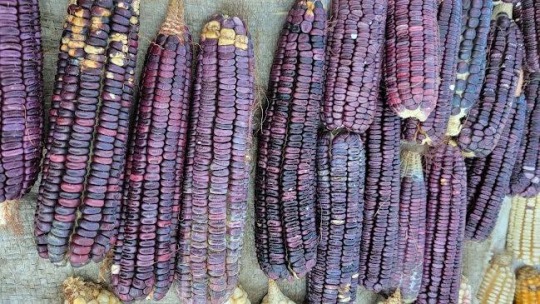
Her dark purple tones can also be a reference to obsidian which was used in all of Mesoamerican for a variety of reason, but I want to highlight that it was used to create “obsidian mirrors” by the Aztecs, I believe this is where her nickname came from since these objects were called itzli! These mirrors had the power to reveal hidden truths, communicate with the spiritual world, and predict the future. Shamans and priests used these during various ceremonies along with other objects

The instrument used to make this textiles is actually called “telar de cintura” the most literal translation would be “waist loom”, but it seems that the translated English word is “blackstrap loom” probably pointing at her skirt in her design! Her entire desing is also filled with both Aztec and Mexica elements such as the triangle and diamond motifs, plus the “eyes” that characterize her tribe


That’s the cultural elements I could notice from Citlali, she’s my favorite character from not only from a design standpoint but also personality wise, and as a Mexican I am absolutely floored that I was able to recognize so many little details from Mexica and Aztec culture after researching her design !!!! I am also thinking of making a Kinich post since he seems to have various Mayan influences
#genshin impact#pop rambles#citlali#citlali genshin#I love how I could recognize so many cultural references in Natlan#absolutely my favorite region environment wise#Natlan designs
11 notes
·
View notes
Text
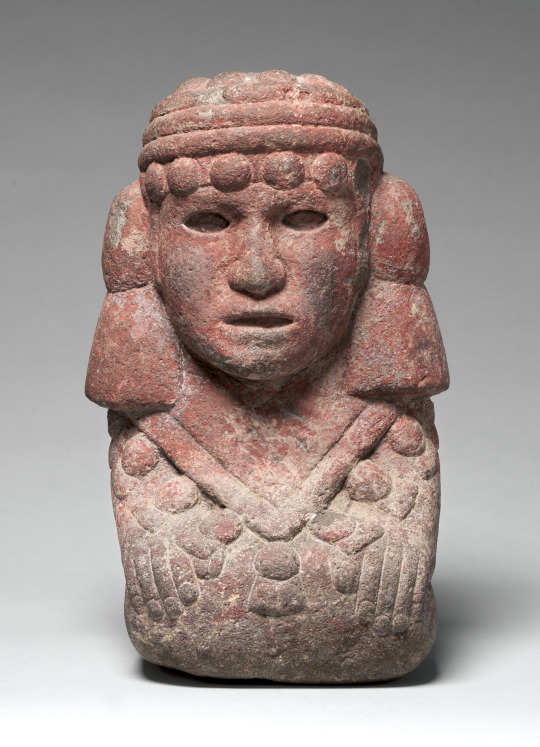
Water Deity (Chalchiuhtlicue)
Aztec, 15th–early 16th century
The finely carved figure belongs to a sizable group of kneeling females that display costume elements identifying them as water deities called Chalchiuhtlicue ("she of the jade skirt") in Nahuatl, the language spoken by the Aztecs. In Aztec religion, the water goddess was the wife of the rain god Tlaloc, an ancient deity that had long been worshipped throughout Mesoamerica. Chalchiuhtlicue symbolized the purity and preciousness of spring, river, and lake water that was used to irrigate the fields. As a fertility goddess, she portrays the Aztec ideal of fertile young womanhood. Most typical of the water goddess costume is the distinctive headdress consisting of multiple thick bands, probably cotton, wound about the head and bordered above and below by rows of balls and two large tassels attached to the sides of the head. In back, the bands are twisted and tied in a prominent knot, the tasseled ends falling over her straight hair. Her clothing is that of a noble woman with a skirt and triangular shoulder cape bordered by a tasseled fringe. The water goddess was closely related to the Aztec corn goddess, Chicomecoatl, who is often also shown wearing this headdress, while holding ears of corn in her hands.
25 notes
·
View notes
Photo

Maize Deity (Chicomecoatl). 15th–early 16th century. Credit line: Museum Purchase, 1900 https://www.metmuseum.org/art/collection/search/307644
#aesthetic#art#abstract art#art museum#art history#The Metropolitan Museum of Art#museum#museum photography#museum aesthetic#dark academia
11 notes
·
View notes
Text
Aztec Pantheon
Acolmiztli (Acolnahuacatl,Colnahuacatl)
Amimitl (Amihmitl)
Atl
Atlacamani
Atlacoya
Atlatonin (Atlatonan)
Atlaua (Atlahua)
Ayauhteotl
Camaxtli (Mixcoatl-Camaxtli-Xocotl)
Chalchiuhtlatonal
Chalchiuhtecolotl
Chalchiuhtlicue (Acuecucyoticihuati, Chalciuhtlicue, Chalcihuitlicue)
Chalchiuhtotolin
Chalmecateuctli
Chalmecatl
Chantico (Chantico-Cuauhxólotl, Chiantli)
Chicomecoatl (Xilonen)
Chicomexochtli
Chiconahui
Chiconahuiehecatl
Cihuacoatl (Chihucoatl, Ciucoatl)
Cinteotl (Centeotl, Centeocihuatl)
Cipactonal
Citlalicue (Citlalinicue, Ilamatecuhtli)
Coatlicue (Teteoinan, Teteo Inan, Toci, Cihuacoatl)
Cochimetl (Cocochimetl)
Coyolxauhqui
Cuaxolotl
Ehecatl
Huehuecoyotl (Ueuecoyotl)
Huehueteotl (Ueueteotl)
Huitzilopochtli (Uitzilopochtli)
Huixtocihuatl (Uixtochihuatl, Uixtociuatl)
Itzli (Itztli)
Itzpapalotl
Ixtlilton (Tlaltetecuin)
Macuilcozcacuauhtli
Macuilcuetzpalin
Macuilmalinalli
Macuiltochtli
Malinalxochitl
Matlalceuitl (Matlalcueje)
Mayahuel (Mayahual, Mayouel)
Metztli (Meztli, Metzi)
Mextli (Mexitl, Tecciztecatl)
Mictlancihuatl (Mictecacihuatl)
Mictlantecuhtli (Mictlantecuhtzi, Tzontemoc)
Mixcoatl
Nanauatzin (Nanauatl)
Nagual (Nahual, Nahualli)
Ometeotl (🚺: Omecihuatl, 🚹: Ometecutli)
Ometotchtli (Ometochtli)
Opochtli
Oxomoco
Patecatl
Quetzalcoatl
Tecciztecatl (Tecuciztecal, Tecuciztecatl)
Temazcalteci (Temaxcaltechi)
Teoyaomicqui (Teoyaoimquit, Huahuantli)
Tepeyollotl (Tepeyollotli)
Tepozceatl (Tezcatzontecatl)
Tezcatlipoca
Tlahuizcalpantecuhtli (Tlahuizcalpantecutli, Tlahuixcalpantecuhtli)
Tlaloc (Nuhualpilli)
Tlaltecutli (Tlaltecuhtli)
Tlazolteotl (Tlaelquani)
Tonacatecuhtli
Tonacacihuatl
Tonantzin
Tonatiuh
Toci
Tzitzimitl
Xipe Totec (Yopi)
Xiuhcoatl
Xiuhtecuhtli (Huehueteotl)
Xochipilli (Macuilxochitl)
Xochiquetzal
Xocotl
Xolotl
Yacatecuhtli (Yiacatecuhtli)
3 notes
·
View notes